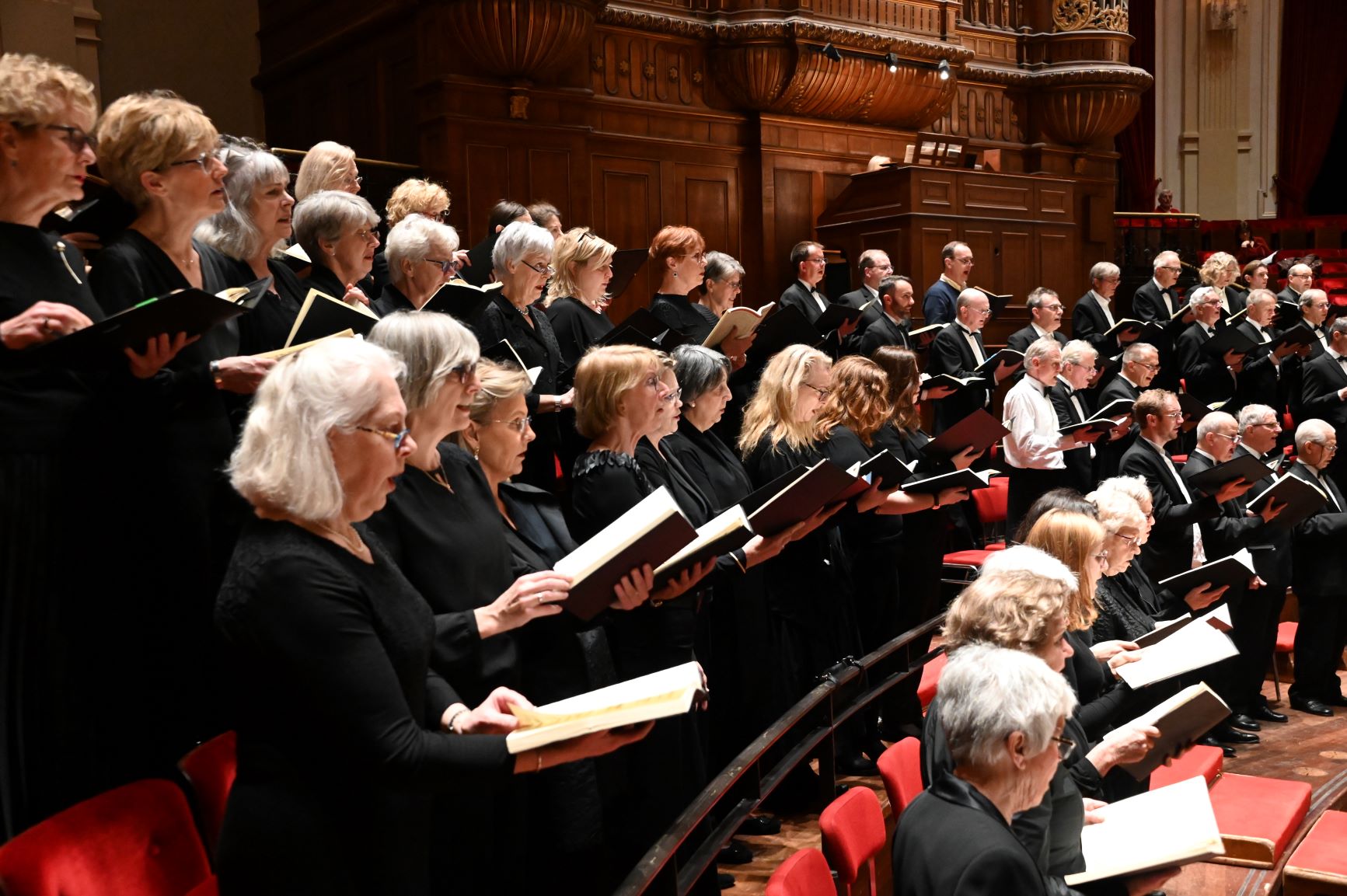Choral singing has been a super spreader of Covid-19 a number of times. Physicist and conductor Ivo Bouwmans is collecting relevant research on the website virmus.nl.
The Amsterdam Mixed Choir (AGK) in the Concertgebouw on the evening of 8 March. (Photo: P.H. van Straaten)
After the performance of the Johannes Passion in the Concertgebouw on 8 March, the Amsterdam Mixed Choir (AGK) was severely affected by the coronavirus. One hundred and two of its 130 members fell ill, a considerable number of them seriously. One choir member died, as did three partners of choir members. The reconstruction by the newspaper ‘Trouw’ did not reveal any link with northern Italy or the Brabant carnival. Choir performances in Washington and Berlin were also followed by a large number of corona infections. What is it that makes choral singing so contagious?
RIVM
That question also kept physicist Dr Ivo Bouwmans (TPM) busy. In addition to his research and teaching in complex energy systems, he is choir conductor at De Vak in Delft and he conducts a church choir. In mid-May, Radio 4 interviewed him about the dangers of group singing, and last week he provided the RIVM with the latest information so that it could issue a well-founded recommendation to the Outbreak Management Team, which assists the cabinet.
Virmus
Averse to hysteria, but sympathetic to the approximately 140,000 registered choir singers in the Netherlands united in Koorwerk Nederland, Bouwmans decided to set up a website with ‘scientifically substantiated information about what we know and don’t know about the spread risks of the virus called SARS-CoV-2, or simply coronavirus, in situations where music is made’. This is more broadly formulated than just choral singing because wind instruments seem to present the same risks. When the Rotterdam Philharmonic Orchestra asked Bouwmans when they could play music safely again, this was the reason for setting up the website virmus.nl (virus + musician).
Aerosols
Basically, the problem is that the spread of the coronavirus through the air is not only through droplets, but also through much smaller moisture particles (aerosols) that are suspended in the air like droplets of fog and circulate through the concert hall.
Aerosols float freely in the air
The other one-and-a-half- metre guideline is based on the estimated range of saliva droplets. Aerosols float freely in the air and, according to research; the viruses contained in them could have a half-life of an hour (after one hour, half of the virus survives; a quarter after two hours). So who knows what might still be floating in a church after a concert.
Additional risk factors are low temperatures that keep the aerosols intact for a long time, deep inhalation when singing, and finally the often above-average age of the choir members.
Publications
On his website, Bouwmans is collecting a growing list of scientific studies on subjects such as droplet size near the mouth; distribution of aerosols by humans; the usefulness of face masks for general use; breathing of flute players; the distribution of droplets in an enclosed space and more.
Guideline
From 1 June, meetings of up to 30 people will probably be allowed again in the Netherlands. Choir members would like to sing and meet again. Is that wise? When is it safe to sing again? That is the most frequently asked question for Bouwmans.
“At one-and-a-half-metre distance in a not very well-ventilated room, I wouldn’t do it,” says Bouwmans on the basis of everything he has read. “What’s more, choir rehearsals are not just singing, they’re also informal gatherings before and afterwards.”
The information is piling up, but there is no RIVM guideline for choirs yet. According to Bouwmans, it will have to be in place soon. Otherwise impatient conductors will decide for themselves how and when they will start rehearsing again. And that, as we have seen, could be ugly.
Do you have a question or comment about this article?
j.w.wassink@tudelft.nl


Comments are closed.